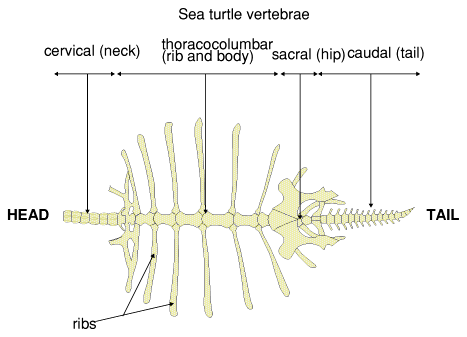Structure of the skeleton
Vertebrae:
All vertebrates have a backbone
or vertebral column. This backbone acts as a girder carrying the weight
of the organs of the body. The backbone is made up of vertebrae separated
by discs made of cartilage. The vertebrae also protect the spinal cord,
provide attachment for muscles and ligaments (fibres which join bone to
bone). The vertebral column is flexible allowing for limited bending of
the body ( although little in the sea turtles).
In sea turtles, the rib, body and hip vertebrae are fused (joined) to the neural plates of the carapace or shell. There are five types of vertebrae although these are reduced and considerably modified in the sea turtles.

Thoracocolumbar vertebrae:
In most vertebrates, there is clear structural difference between the thoracic (rb) and lumbar (body) vertebrae. In sea turtles there is little difference and they are all firmly fused or joined to the neural plates of the carapace. this is clearly shown in the main diagram of the sea turtle.
Caudal vertebrae: